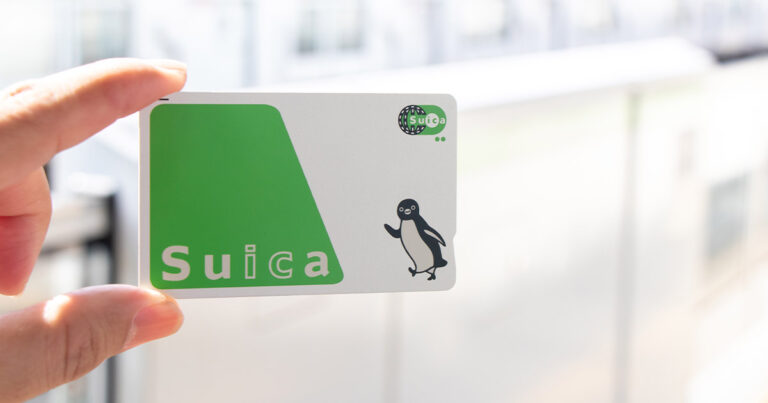Salary packaging: What is it and how does it work?

This article covers:
Salary packaging is a way to ‘package’ your salary into income and benefits. It’s also known as salary sacrifice. The process of salary packaging can be beneficial for both employers and employees, but it’s important to understand how it works before deciding if it’s right for you.
Simply put, salary packaging is a term used to describe the salary, and additional job benefits such as incentives, superannuation, leaves (sick, emergency, and annual), allowances, and bonuses you will receive if you accept or are offered a job.
How does salary packaging work?
Typically, salary packaging is an agreement between you and your employer to receive less income and sacrifice a part of your salary for benefits such as a company car, health benefits, allowances, or private health insurance.
The agreed sacrifice amount is usually deducted before your tax is calculated, so you end up paying less tax.
Who is eligible for salary packaging?
Before you can receive a salary package, you will need to know if you are eligible for one. So, to be eligible for salary packaging you must be one of the below:
- A full-time employee; or
- A permanent part-time employee; or
- A temporary employee with a contract with at least three months’ duration
Casual employees are usually ineligible for salary packaging, although this is left to the discretion of the Employee Benefits Team depending on your established work patterns.
All eligible employees who want a salary package should enter into an effective salary package agreement with their employer.
What benefits are available?
The benefits of a salary package can fall into three categories: exempt benefits, fringe benefits, and super. All three types of benefits offer perks that are exclusive to their category:
Fringe benefits
These benefits that you receive every year appear on your annual payment summary at the time of taxation. As an employee, you will not be required to pay tax or healthcare levy on this amount. Fringe benefits may/can include:
- Car
- Health insurance
- Loans (typically car loans)
- School fees
- Childcare fees
- Other personal expenses
Exempt benefits
Benefits under this category will not be included in your annual payment summary. Your employer will be exempted from paying fringe benefits tax on these benefits. Exempt benefits may/can include:
- Portable devices (laptop, tablet, or smartphone)
- Computer software
- Protective clothing
- Tools or equipment for the job (laptop, software, protective gears, machinery)
Super
If you want to give a boost to your retirement savings and reduce your tax, super is the benefit you will want to include in your salary package. This is if you can, and can afford it.
This is because you will have to pay at least 10.5% more than your usual and ordinary time earnings into your super account. This minimum payment is called a super guarantee.
So how does super work? When your employer makes regular superannuation contributions on your behalf as a part of your standard salary. Then, by salary packaging your super, you can use the funds from your pre-tax salary to arrange and affix additional contributions to your superannuation. This can and will reduce your taxable income and boost your retirement savings as we mentioned above.
Super is beneficial for both you and your employer alike because it allows for larger contributions.
Here’s a super tip for you; when sacrificing into super, it is important for you to carefully monitor your annual concessional (before-tax) contributions, to ensure that you do not exceed the concessional contributions cap for the financial year.
Pros and cons of salary packaging
Of course, much like everything else, there are both pros and cons to salary packaging. So before you agree to salary packaging, there are a few things you need to consider beforehand:
Pros
First, we will take a look at the pros:
- Reduce taxable income
- Receive certain benefits tax-free
- Build up superannuation faster (help boost your retirement savings)
Cons
Next, we will take a look at the cons:
- May reduce eligibility for government benefits, such as the age pension
- May limit the ability to access credit in the future
- Benefits may be subject to fringe benefits tax (FBT)
We can’t say whether you should agree to salary packaging or which one you should accept because deciding on salary packaging is a personal decision that only you can make. Only you know what your present situation is and if it would work well for you and your family.
This is because if you go over the annual cap amount, you may have to pay extra tax. Also before you decide to set salary sacrifice for your super arrangement you might want to consider these three things first;
- Your debt level
If you currently have a large debt, salary sacrificing into super means you will have less after-tax income to pay off your debts.
- Impact on salary benefits
When you make a salary sacrifice, it will change your salary level. This may mean benefits such as holiday loading and overtime are lower, as your salary amount is lower.
- No deductions or tax offsets
The salary amount sacrificed for super cannot be claimed as tax deductions and you do not receive a tax offset for the sacrificed salary amount.
Salary packaging & fringe benefits tax
If you’re salary packaging, it’s important to be aware of FBT. FBT is a tax that is levied on certain benefits that are provided as part of your employment package. These benefits can include things like a company car or private health insurance.
Employers are mandated by law to pay fringe benefits tax (FBT) on specific salary packages they provide to employees. These salary-packaged benefits refer to what are called ‘capped’ benefits under an FBT arrangement.
Since some of the benefits are reflected on an employee’s end-of-year payment summary for tax purposes, they could impact tax considerations and government benefits. Thus, both employees and employers should know about things like tax offsets, the Medicare levy surcharge, and child support payments that can all be impacted by these capped benefits.
FBT is imposed on the taxable value of each fringe benefit. These benefits fall into three categories:
- Fully-taxable benefits: The majority of fringe benefits are classified under this category. These include mortgage payments, school and club fees, private telephone accounts, etc.
- Concessionally taxed benefits: Certain benefits may be legally taxed (i.e. the calculated taxable value results in only a portion of the benefit being taxable). Examples of these are low-interest loans and car benefits.
- Tax-exempt benefits: Benefits that are not included under the definition of ‘fringe benefits do not come with an FBT liability. These benefits are FBT-exempt if they are taxable under different tax legislation (e.g. salaries and wages), or fall under the ‘otherwise deductible rule’ (e.g. income protection insurance).
How much can you fit into your salary package?
So, if you’re wondering: “how much can you get in your salary package?” There’s no specific salary package ceiling amount set when it comes to salary packaging, except if your employer category falls under specific classifications (e.g. you work for a hospital, NGO, or charity) according to the Australian Taxation Office (ATO) guidelines.
What you can do is use an online salary sacrifice/package calculator to calculate your salary packaging benefit. Although it may not provide the exact amount, it will give you a general idea of how beneficial salary sacrifice will be for you.
When it comes to salary packaging, there are a few things you need to keep in mind. These include:
- The amount you can sacrifice will be limited by your employer’s industrial agreement, award, or contract of employment.
- You may be able to package some items before tax (pre-tax), and others after tax (post-tax).
- You may be able to package some items for 12 months, and others for the whole financial year.
- You will need to keep track of your salary packaging arrangements as they will affect your end-of-year tax return.
Case study
To help further understand salary packaging, we’ve included this case study.
Example: Salary package of a motor vehicle
Sam earns $65,000 a year and is considering entering into an effective salary package arrangement.
Under this arrangement, his employer will provide the use of a $35,000 car and pay all the associated running expenses of $11,500. The $11,500 running expenses include registration, which is GST-free. The GST-exclusive value of the car expenses is $10,509. A flat statutory rate of 20% applies for FBT purposes, regardless of the distance travelled.
The salary packaging provider calculates that:
- the taxable value of the car fringe benefit will be $7,000 (which is the cost of the car multiplied by the statutory rate, in this case, $35,000 × 0.20) and
- Sam will sacrifice
- $17,353 if no employee contributions are made, or
- $4,145 if employee contributions of $7,000 are made.
The following table illustrates how salary sacrificing and employee contributions work, by comparing the net disposable income for Sam in three scenarios for 2019–20:
- no salary package arrangement
- a salary package arrangement without any employee contributions
- a salary package arrangement where employee contributions are provided.
Below we have prepared three different salary package scenarios:
|
Calculations |
Salary Only (No Packaging) |
Salary and car (without employee contributions) |
Salary and car (with employee contributions) |
|
Annual remunerations |
$65,000 |
$65,000 |
$65,000 |
|
Less salary sacrifice |
nil |
$17,353 |
$4,145 |
|
Taxable income |
$65,000 |
$47,657 |
$65,855 |
|
Less income ( 2020 – 2021 rates) |
$11,592.00 |
$5,952.28 |
$10,244.88 |
|
Less 2% Mediocre |
$1,300.00 |
$952.94 |
$1,217.10 |
|
Income after tax and salary sacrifice amount |
$52,108 |
$40,741.78 |
$49,393.12 |
|
Less employee contribution |
nil |
nil |
$7,000.00 |
|
Less car expenses |
$11,500.00 |
nil |
nil |
|
Net disposable income |
$40,608 |
$40,741.78 |
$42,393.12 |
|
Reportable fringe benefits amount for employee’s income statement or payment summary |
nil |
$13,207.60(car fringe benefits taxable value of $7000 x1.8888) |
nil |
However, we would like to mention that salary packaging is more effective and applicable for those of middle to high income. So before you get a salary package, you might want to check where your financial situation is currently at. Should your current financial situation allow you to get a salary package, then we recommend you to get professional tax advice to help you work it out further and see if salary packaging is for you, even if your financial situation and position allow you to do so.
Before you go…
And if you are planning to move to Australia for work… don’t forget to sign up for Instarem to move your money.
Here’s why:
Cost-effective
Low transfer fees enable you to send money to multiple destinations without burning a hole in your pocket.
Easy and fast
Transferring money to other countries is typically an instant transaction.
Trusted and secure
Instarem is regulated by nine financial regulators across the globe. Instarem is a trusted licensed service provider with licenses in Australia, Singapore, Hong Kong, Malaysia, India, UK, US, EU, and Canada.
Earn loyalty points
You will be rewarded with loyalty points which are referred to as ‘InstaPoints’ for every transaction and referral you make via Instarem. You will then be able to redeem your points and get great discounts for future transactions. Remember, the more you transfer, the more you earn!
Transparency
Absolutely no hidden costs. You will be in the know of the exact rates and fees applied to your money transfer.
Try Instarem for your next transfer.
Download the app or sign up here.
*Disclaimer: This article is intended for informational purposes only. All details are accurate at the time of publishing. Instarem has no affiliation or relationship with products or vendors mentioned.
Instarem stands at the forefront of international money transfer services, facilitating fast and secure transactions for both individuals and businesses. Our platform offers competitive exchange rates for popular currency pairs like USD to INR, SGD to INR, and AUD to INR. If you're looking to send money to India or transfer funds to any of 60+ global destinations, Instarem makes it easy for you. We are dedicated to simplifying cross-border payments, providing cutting-edge technology that support individuals and businesses alike in overcoming traditional fiscal barriers normally associated with banks. As a trusted and regulated brand under the umbrella of the Fintech Unicorn Nium Pte. Ltd., and its international subsidiaries, Instarem is your go-to for reliable global financial exchanges. Learn more about Instarem.

























